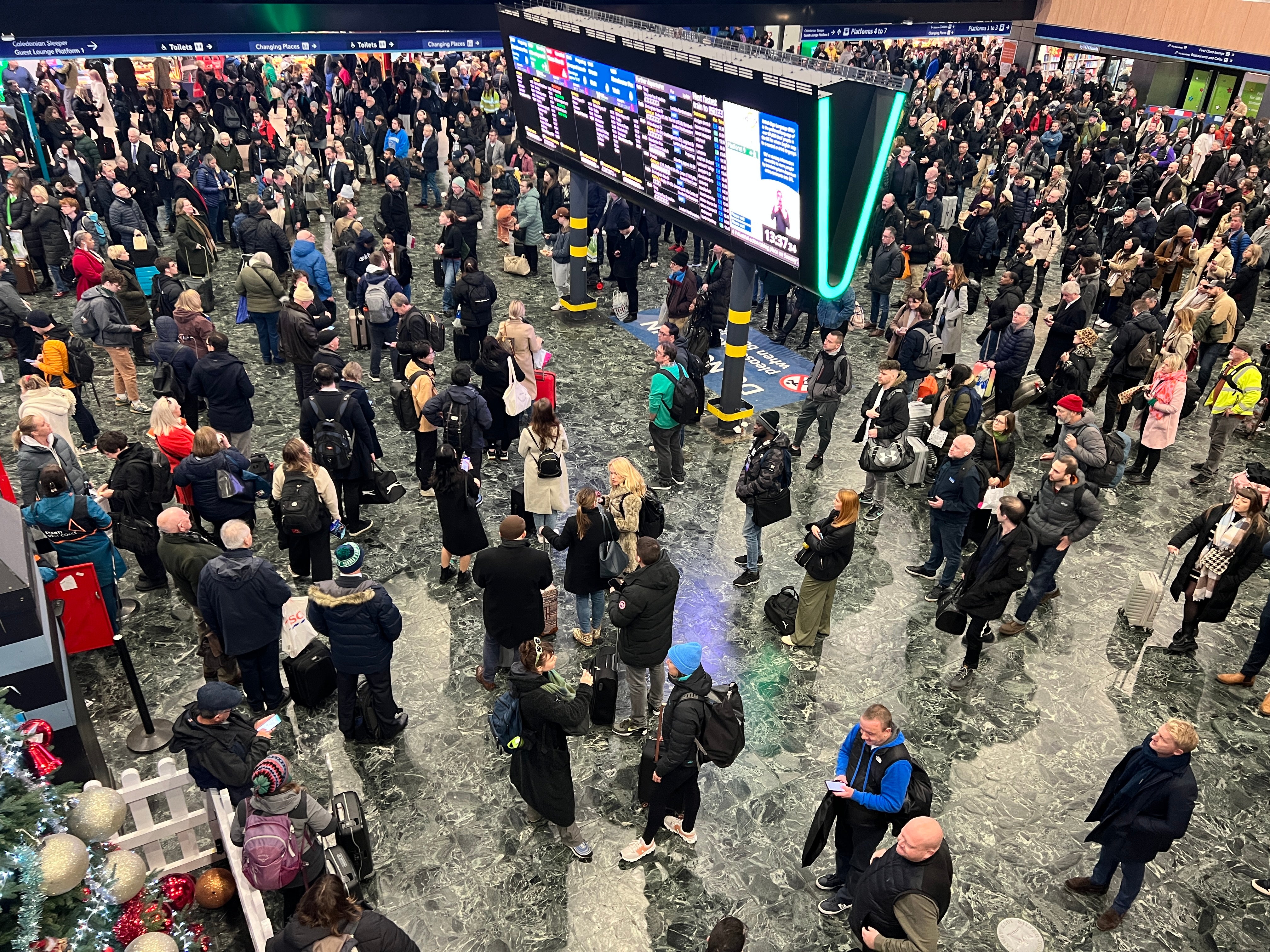Euston has a problem that only HS2 can solve
Train Talk: What is going on at the West Coast main line hub – and can five points fix it?

What stretches from platform 4 to platform 12 at one of the UK’s busiest stations? It’s Europe’s “largest indoor digital OOH screen” (OOH stands for Out-Of-Home, which it certainly is) at London Euston station. Until Friday it was probably the single most valuable advertising site in Britain. But now, just nine months after its installation, the plug has been pulled by Network Rail.
The decision to go from dazzling graphics to a darker shade of black was the first demand in a five-point review into the passenger experience at the terminus ordered by the transport secretary, Louise Haigh.
Euston is arguably the most important station in the country. On the West Coast main line, Avanti West Coast provides the principal rail connection between the capital and four of the UK’s greatest cities: Birmingham, Manchester, Liverpool and Glasgow. In addition, London Overground and London Northwestern serve the northwest suburbs and Home Counties. Not forgetting the Caledonian Sleeper operation to the Scottish lowlands and highlands.
With such complexity, clear and timely information is essential – rather than sensory overload from unsolicited ultra-widescreen messages.
I’ll class the decluttering as an easy win (except for the taxpayer, who will be called upon to make up for the revenue lost by Network Rail). Since the switch-off, detecting the next departure for Leighton Buzzard feels slightly less of a challenge.
But points two to five inclusive look tougher. They are intended to tackle the “high levels of overcrowding” that are “putting passengers in danger” – according to the transport watchdog London TravelWatch.
The key problem: when the rebuilt station was opened by the Queen in 1968, the railways were in long-term decline. Planners predicted no more than 30,000 passengers a day would use Euston. Instead, passenger numbers have almost trebled.
During disruption, crowds build quickly and surge towards the ticket barriers when the secret is revealed about whether the Manchester Piccadilly train will depart from platform 1 or 16 – often with just a few minutes’ warning.
Watching from the mezzanine above the concourse, this phenomenon can be alarming. London TravelWatch said that as a result of “last-minute announcements, staff appear overwhelmed by the sheer numbers of people”.
Ms Haigh has demanded: “A review on how passengers are invited to, and board services, especially during disruption.” The aim will be to provide earlier warning so that the flow of passengers is gentler – hopefully to end the “Euston stampede”.
Point three sounds promising: “Creating more concourse space”. This can be achieved by reducing the retail footprint (and cutting still further Network Rail’s revenue). But the elephantine project intruding on the room is the stalled HS2 project on the western flank of the station: currently a zombie building site after the last government shut it down.
You can put point four in the “screamingly obvious” category. It is: “Unifying station operation during disruption to ensure a holistic approach is taken for the benefit of all passengers.” The travelling public has the right to expect that Network Rail and the train operators will be doing just that, day in and day out.
Point five requires considerable finger-crossing: “Driving up the reliability of both the infrastructure and train services to reduce disruptive events being experienced at the station.” On Tuesday a problem involving two freight trains outside Crewe reverberated up and down the West Coast main line, causing delays through the evening.
Cutting down on disruption is the toughest ask. The best way to achieve it? Complete HS2 to and from Euston, which will involve creating vast new subterranean station areas. Awaken the zombie building site, and get on with it.
Join our commenting forum
Join thought-provoking conversations, follow other Independent readers and see their replies
Comments